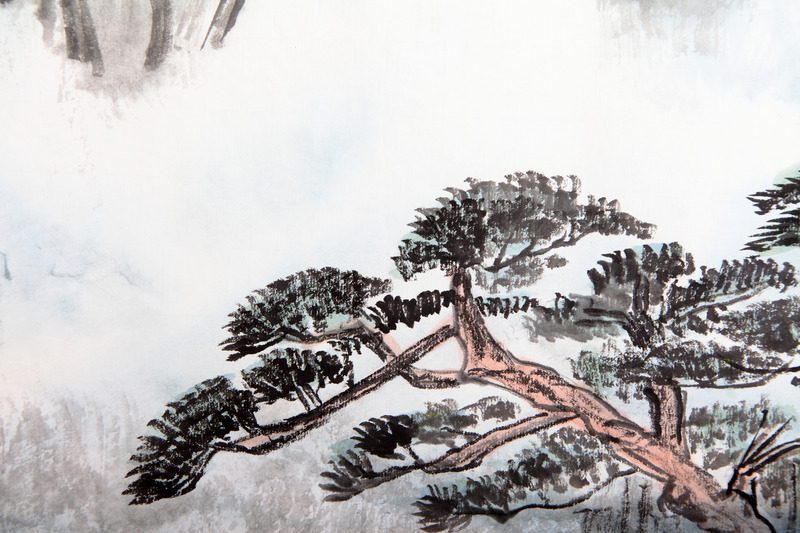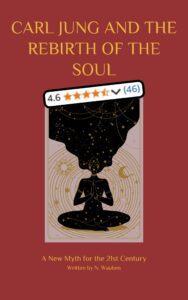Table of Contents
General Introduction
The Black Books consist of 7 volumes written by Carl Jung between 1913 and 1932. They were not available to the general public until the end of 2020, when Sonu Shamdasani published an edited edition, including an introduction to the Black Books. As Sonu Shamdasani indicated at the back of the book-set, they were the most important unpublished work written by Carl Jung.
In this series of 7 articles, I will attempt to analyse, summarize, and discuss each volume separately. In this article I will discuss the third volume of the Black Books, the discussion of the first volume can be found here: Introduction to the Black Books: Volume 1, and the second volume here: Carl Jung – the Black Books Volume 2: Challenges Inherent to the Exploration of the Unconscious. If you do not want to miss the discussion of the following volumes of Carl Jung’s Black Books please consider subscribing to my newsletter or YouTube channel, which can be done here: Newsletter & Youtube
Introduction to the Black Books Volume 3 and Summary of Volume 2
Throughout the second volume of the Black Books Carl Jung illustrated the challenges which he had to face during the initial stages of the exploration of his own unconscious.
Throughout volume 2 of the Black Books, we can see Carl Jung make a clear move away from knowledge and reason, replaced by a direction towards the mystic and the world of the unconscious. This transition was not easy to make for Carl Jung, and we can clearly see him struggle with the realization that such a transition is what is required of him: “But our knowledge! Does our knowledge also not hold good for you? What is it going to be, if not knowledge? Where is security? Where is ground? Where is firm land? Where is light?” (p.172)
This transition continues throughout volume 3 of the Black Books, and, eventually, we can see that Carl Jung accepts that there exist two kinds of truths, thereby he embraces both worlds simultaneously, the conscious and the unconscious world.
The Way of the Soul
At the end of the second volume of the Black Books, Carl Jung accepts the challenge to investigate the truths hidden within the world of the unconscious: “But I am willing. Because the divine light shines bright for us in the greatest darkness. How shall I ever walk under your sun if I do not drink the nightly bitter draught of slumber to the lees? Help me so that I do not choke on my own knowledge.” (p.170) At the beginning of the third volume, after a decision was made to overcome the challenges discussed throughout the second volume, Carl Jung continues the investigation of the world of the unconscious.
Carl Jung came to the realization, that his soul, besides residing in a different world, also has ‘her’ own will: “I forgot that I had reached a new world, which had been alien to me previously. I see neither way nor bridge. What I believed about the soul has to become true here, namely that she knows her own way better, and that no intention can prescribe a better one for her.” (p.99) As a result of this realization, Carl Jung had to forego on the scientific truths upon which he had relied heavily up until that point: “I feel that a large chunk of science has been broken off. I suppose it might be like this, for the sake of the soul and her life.” (p.99)
Carl Jung worried that no-one would benefit from this ‘un-scientific’ research which he was conducting: “I find the thought that this must occur only for me agonizing, and that perhaps no one will gain insight from my work. But my soul demands this achievement.” (p.99)Interestingly however, as Carl Jung himself later indicated as well, all his most important and influential ideas, which are widely known today, sprung from this research of the world of soul. Later in this article a clear example will be discussed.
Izdubar (Gilgamesh) The Giant
Despite his agonizing thought that no-one would benefit from his work, Carl Jung continued his adventure. He compared himself to early Christian anchorites who withdrew from society for the sake of a certain calling: “They came to the most relentless conclusions with regard to the psychological necessity of their time. They left wife and child, wealth, glory and science – and turned toward the desert – for God’s sake. So be it.” (p.99) Jung ventured into his own desert and realized how dark it was: “How dark is the path of a man when he reaches the new world, the world in between! Beyond us there is unending darkness. Where is this “beyond”? Probably deep in ourselves.” (p.116)
However, eventually, Carl Jung started to encounter certain characters through his exploration. One of these characters is Izdubar, who is now best known as Gilgamesh. A large part of the third volume of the Black Books is dedicated to this interaction which Carl Jung had with Izdubar. And this interaction clearly illustrates the distance between the world of the conscious and the unconscious.

At the beginning of this interaction Izdubar is struck by the ‘horrific’ scientific truths which Carl Jung shares with him. According to Izdubar, theses truths are poisonous: “Oh, Izdubar, most powerful one, what you call poison is science. In our country we are nurtured on it from youth, and that may be one reason why we haven’t properly flourished and remain so dwarfish. When I see you, however, it seems to me as if we are all somewhat poisoned.” (p.122)
These truths directly contradict the truths which Izdubar had heard from the priests of his world, and he argues that the truths of his priests are not poisonous: “You call poison truth? Is poison truth? Or is truth poison? Do not our astrologers and priests also speak the truth? And yet theirs does not act like poison.” (p.122)
After discussing back and forth they conclude that there most be two kinds of truth, one coming from the observation of the external world, and another one, stemming from the exploration of the inner world: “Our truth is that which comes to us from the knowledge of outer things. The truth of your priests is that which comes to you from inner things of the human spirit.” (p.122)
Meanwhile, however, the ‘poisonous’ truths of the external world, have been so horrific to Izdubar, that he is severally lamed by them. Carl Jung concludes that we humans have no choice but to accept the truths of the external world, if we do not do so, they might eventually overwhelm us as well, and we ourselves will be equally lamed: “Now you perhaps see that we had no choice. We have to swallow the poison of science. Otherwise, we meet the same fate as you have – we will be completely lamed, if we encounter it unsuspecting and unprepared. This poison is so insurmountably strong that everyone, even the strongest, and even the eternal Gods, perish because of it.” (p.124) I believe that this connects to a previous article which I have written about Nietzsche’s idea of the death of God. With our science, we have ‘killed’ God, and we have thereby also killed our connection to the other more spiritual world. The conversation below between Carl Jung and Izdubar illustrates this idea further:
“Izdubar: Have you no Gods anymore?
Carl Jung: No, words are all we have left.
Izdubar: But are these words powerful?
Carl Jung: So they claim, but one notices nothing of this.
Izdubar: We do not see the Gods either and yet we believe that they exist, and we recognize their workings in natural events.
Carl Jung: Science has taken from us the capacity to belief.
Izdubar: What, you have lost that, too? How then do you live?
Carl Jung: We live so-so, with one foot in the hot and one foot in the cold, and for the rest, come what may!
Izdubar: You express yourself darkly.
Carl Jung: So it also is with us, it is dark.
Izdubar: Can you bear it?”
The Necessity for Guidance
In relation to this discussion Carl Jung makes an interesting point. According to Jung, the scientific truths poisonous to the figure of Izdubar can be problematic for us as well. This is the case because the possibilities of our conscious world have become limitless, and we risk being swallowed up by the immense variety of possibilities: “Just as the concrete world has expanded from the limitedness of the ancient outlook to the immeasurable diversity of our modern outlook, the world of intellectual possibilities has developed to unfathomable diversity.” (p.130)
As a result, Carl Jung indicated that no-one will be able to grasp the entire ‘path’ of life any longer, and only specialists will be able to exist: “Infinitely long paths, paved with thousands of thick volumes, lead from one specialization to another. Soon no one will be able to walk down these paths anymore. And then only specialists will remain.” (p.131) Instead of these specializations, Jung suggested that we need an overarching thing or principle that is capable to give guidance to the mind during such a time of limitless possibilities: “Our time requires something capable of regulating the mind […] More than ever we require the living truth of the life of the mind, of something capable of providing firm guidance.” (p.131) Friedrich Nietzsche, in his book the Gay Science, made a similar argument: “We have given things a new color; we go on painting them continually. But what do all our efforts to date avail when we hold them against the colored splendor of that old master – ancient humanity?” (p.197)
The World of Evil
One of the aspects of life for which our mind requires guidance, according to Jung, is the existence of evil. Science has not yet proven a match against the existence of evil, perhaps it can even be argued that science has resulted in more evil in some ways.
At the end of the third volume of the Black Books Carl Jung observed that he had been paying too little attention to evil, even though it is an equally important aspect of life: “Evil? I thought too little about evil. Evil exists, too. Evil, the abysmal evil is not to be forgotten. There is no scientific cover-up for it. Even the world “evil” is commonplace, but not the thing per se.” (p.133)
I believe that this discussion of evil was the source for one of Jung’s most famous ideas; finding that which you need the most, at the places where you least want to look: “Here lies an inner reluctance – what is it I do not want to see?” (p.133) With this idea in mind, Carl Jung decides to venture into this valley of which he was so afraid. In this valley he finds a dead girl who is missing her head. Suddenly another figure appears within this imagination of Jung, who addresses him and wants to know what Jung makes of this sight. An interesting conversation ensues:
“She asks me quietly: “What then do you say?”
Carl Jung: What should I say? This is beyond words.
She: “Do you understand this?”
Carl Jung: I refuse to understand such things. I can’t speak about them without becoming enraged.
She: Why become enraged? You might as well rage every day of your life, for these and similar things occur on earth every day.” (p.135)
Eventually the figure asks Carl Jung to take out the liver of the dead girls’ body and eat it. Carl Jung of course refuses, but the figure claims to be the soul of the dead child and argues that Carl Jung must eat the liver to help her. After committing the act, the figure reveals herself and indicates to Carl Jung that she is his soul:
“Do you recognize me?
Carl Jung: How strangely familiar you are!
Who are you?
She: I am your soul.” (p.136)
Conclusions
Throughout the third volume of the Black Books some interesting interactions between Carl Jung and characters emerging from the unconscious are presented to the reader. Jung is finally able to have the interactions with his unconscious which he was seeking. He reached this point by (1) letting go of his reliance on scientific truths and (2) by looking at the places where he least wanted to look.
If you are interested in how this development continues to unfold in the fourth volume, thenplease consider subscribing to my newsletter or YouTube channel, which can be done here: Newsletter & Youtube. Thank you for reading!

